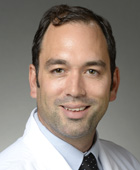Author Interviews, Emergency Care, Neurological Disorders, NYU, Pain Research / 30.06.2016
NYU Neurologist Comments On New Guidelines For Emergency Room Treatment of Migraines
MedicalResearch.com Interview with:
Mia Minen, MD, MPH
Assistant Professor of Neurology
NYU Langone Medical Center
MedicalResearch.com Editor’s note: The American Headache Society has issued new guidelines on “The Management of Adults With Acute Migraine in the Emergency Department” (1,2)
Dr. Minen, Director of Headache Services at NYU Langone Medical Center, discusses these new guidelines below.
MedicalResearch.com: What is the background for these new guidelines?
How common/severe is the issue of migraine or headache presentation to the ER?
Dr. Minen: These guidelines were needed because previous research shows that there are about 1.2. million visits to the emergency department (ED) each year for migraine, and over 25 different medications are sometimes used for treatment. Many of these medications don’t have evidence-based data to back their usage, and opioids are especially likely to be prescribed in between 60 and 70 percent of these cases, despite their lack of efficacy and risks. The American Headache Society convened an expert panel to review the existing evidence on all the medications used to treat migraines in the ED, and we developed these new treatment guidelines.
(more…)

 Amanda Sierra, PhD
Research Professor and Group Leader
Ramón y Cajal Fellow
Achucarro Basque Center for Neuroscience
Laida Bidea
Bizkaia Science and Technology Park
Zamudio, Bizkaia, Spain
MedicalResearch.com: What is the background for this study? What are the main findings?
Dr. Sierra: Microglia phagocytosis of apoptotic cells is at the core of the brain regenerative response to recover the homeostasis of the brain parenchyma after damage because it prevents the spillover of toxic intracellular contents and is actively anti-inflammatory. However, while neuronal death is widespread in neurodegenerative diseases (Alzheimer´s, Parkinson´s, multiple sclerosis) and well as in ischemic and traumatic brain injuries, we have a complete lack of knowledge of the efficiency of microglial phagocytosis in the diseased brain.
In this paper we have discovered that microglia have a generalized response to apoptotic challenges: when confronted to a rise in the number of newborn cells, microglia display a combination of different strategies to boost their phagocytic output: increase the phagocytic capacity of each cell, recruit more cells to become phagocytic, or increase the total number of microglia (Abiega et al., PLoS Biol 2015). Thus, microglia have a very large potential for phagocytosis that could be summoned when needed.
To our surprise, however, in pathological conditions such as epilepsy (mouse and human), microglial phagocytosis was blocked. We have made use of the adult neurogenic cascade, where newborn cells undergo apoptosis naturally and are engulfed by “unchallenged microglia” (Sierra et al. Cell Stem Cell 2010), to establish the baseline of microglial phagocytosis efficiency. Whereas in physiological conditions microglia phagocytose over 90% of the apoptotic cells and remove them in under 1.5h, soon after the seizures it only engulfed 10% of the apoptotic cells and took up to 6h to digest them. This is the first quantification of microglial phagocytosis efficiency in the diseased mouse and human brain..
The block in phagocytosis was a rather complex phenomenon related to an impaired recognition (reduction of phagocytosis receptors) as well as impaired motility and targeting (reduced basal motility). We have also shown that the impairment is mediated at least partially by altered ATP microgradients: ATP is not only a neuro- and gliotransmitter widely released during seizures but is also a well-known “find-me” signal released by apoptotic cells. Thus, during seizures microglia became “blinded” by the neuronal hyperactivity and could not find the apoptotic cells.
In addition, we have shown that impairing phagocytosis releases the break on the inflammatory response. In fact, the impaired microglia were in a pro-inflammatory state and produced more cytokines such as tumor necrosis factor alfa (TNFa) or interleukin-1beta (IL-1b), which are well known neurotoxic and epileptogenic factors.
Amanda Sierra, PhD
Research Professor and Group Leader
Ramón y Cajal Fellow
Achucarro Basque Center for Neuroscience
Laida Bidea
Bizkaia Science and Technology Park
Zamudio, Bizkaia, Spain
MedicalResearch.com: What is the background for this study? What are the main findings?
Dr. Sierra: Microglia phagocytosis of apoptotic cells is at the core of the brain regenerative response to recover the homeostasis of the brain parenchyma after damage because it prevents the spillover of toxic intracellular contents and is actively anti-inflammatory. However, while neuronal death is widespread in neurodegenerative diseases (Alzheimer´s, Parkinson´s, multiple sclerosis) and well as in ischemic and traumatic brain injuries, we have a complete lack of knowledge of the efficiency of microglial phagocytosis in the diseased brain.
In this paper we have discovered that microglia have a generalized response to apoptotic challenges: when confronted to a rise in the number of newborn cells, microglia display a combination of different strategies to boost their phagocytic output: increase the phagocytic capacity of each cell, recruit more cells to become phagocytic, or increase the total number of microglia (Abiega et al., PLoS Biol 2015). Thus, microglia have a very large potential for phagocytosis that could be summoned when needed.
To our surprise, however, in pathological conditions such as epilepsy (mouse and human), microglial phagocytosis was blocked. We have made use of the adult neurogenic cascade, where newborn cells undergo apoptosis naturally and are engulfed by “unchallenged microglia” (Sierra et al. Cell Stem Cell 2010), to establish the baseline of microglial phagocytosis efficiency. Whereas in physiological conditions microglia phagocytose over 90% of the apoptotic cells and remove them in under 1.5h, soon after the seizures it only engulfed 10% of the apoptotic cells and took up to 6h to digest them. This is the first quantification of microglial phagocytosis efficiency in the diseased mouse and human brain..
The block in phagocytosis was a rather complex phenomenon related to an impaired recognition (reduction of phagocytosis receptors) as well as impaired motility and targeting (reduced basal motility). We have also shown that the impairment is mediated at least partially by altered ATP microgradients: ATP is not only a neuro- and gliotransmitter widely released during seizures but is also a well-known “find-me” signal released by apoptotic cells. Thus, during seizures microglia became “blinded” by the neuronal hyperactivity and could not find the apoptotic cells.
In addition, we have shown that impairing phagocytosis releases the break on the inflammatory response. In fact, the impaired microglia were in a pro-inflammatory state and produced more cytokines such as tumor necrosis factor alfa (TNFa) or interleukin-1beta (IL-1b), which are well known neurotoxic and epileptogenic factors.
